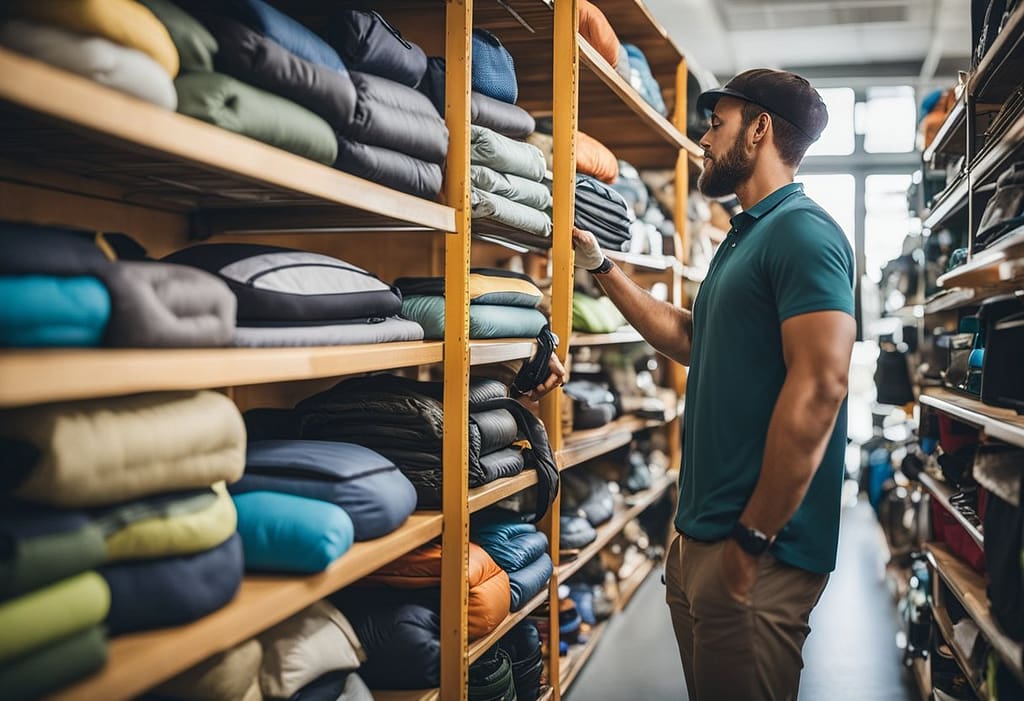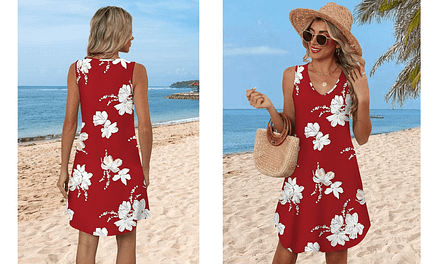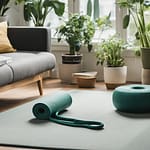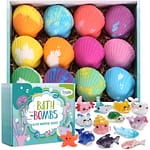
Inexpensive Camping Gear under 50$: Get Outdoors Without Breaking the Bank
When it comes to camping, having the right gear can make all the difference in the world. But, let’s face it, camping gear can be expensive. However, that doesn’t mean you have to break the bank to get quality camping gear. In this article, we’ll explore some of the best inexpensive camping gear options that won’t leave you feeling like you’ve compromised on quality.

Choosing the right tent is essential to any camping trip. It provides shelter and a place to sleep, and it’s important to choose one that is both affordable and durable. There are many affordable camping tents available that provide excellent value for your money. Additionally, sleeping comfort is important to consider, and investing in a good sleeping pad can make all the difference in getting a good night’s sleep.
Cooking and food storage are also important considerations when camping. You need to have a way to cook your food, and there are many affordable camping stoves available that are both lightweight and easy to use. Additionally, food storage containers are essential to keeping your food fresh and organized while camping.
Key Takeaways
- Choosing the right tent and sleeping pad are essential to a comfortable camping trip.
- Affordable camping stoves are available and make cooking while camping easy.
- Proper food storage containers are essential to keeping your food fresh and organized while camping.
Inexpensive Camping Gear
| Product Name | Rating | Price |
|---|---|---|
| Luvknit Portable Solar Charger | 4.9 | $47.99 |
| LifeStraw Personal Water Filter | 4.8 | $9.89 |
| LifeStraw Peak Series Filter | 4.8 | $24.95 |
| Hand Warmers Rechargeable (2 Pack) | 4.8 | $19.99 |
| BOMKI Camping Cooking Utensils Set | 4.8 | $44.99 |
| STANLEY Nesting Two Cup Cookset | 4.8 | $25.00 |
| Stanley The Camp Pour Over Set | 4.7 | $33.67 |
| SZHLUX Camping Hammock | 4.7 | $11.99 |
| Rechargeable Hand Warmers (3200mAh*2) | 4.7 | $15.99 |
| TACTIMAN Multi Tool Camping Hammer | 4.7 | $25.99 |
| Camp Kitchen Utensil Set | 4.7 | $24.99 |
| QIO CHUANG Emergency Thermal Blankets | 4.7 | $7.50 |
| FLY2SKY Tent Lamp Portable LED Light | 4.6 | $13.99 |
| Picnic Table Cover with Bench Covers | 4.5 | $21.98 |
| Coleman 24-Piece Enamel Dinnerware Set | 4.5 | $19.97 |
| GETASI Headlamp Rechargeable | 4.5 | $12.99 |
| LcFun Waterproof Outdoor Lighter | 4.5 | $9.88 |
| Coghlan’s Stove | 4.5 | $9.50 |
| Coleman Camp Soap Sheets Dispenser | 4.5 | $4.49 |
| KA-BAR Tactical Spork Tool 9909 | 4.5 | $6.93 |
| WintMing 70L Camping Hiking Backpack | 4.4 | $39.99 |
| Headlamp Rechargeable 4Pack | 4.4 | $39.98 |
| 2 Pack USB Rechargeable Windproof Lighter | 4.3 | $15.98 |
| ROAMFREE Extra Large Sleeping Pad | 3.9 | $49.99 |
| D&J Backcountry Bathroom | 3.5 | $19.99 |
*Please note that prices are subject to change and may vary depending on the seller, location, and any applicable discounts or promotions. The ratings provided are based on customer reviews and may also change over time. Amazon Affiliate Link.
Choosing the Right Tent
When it comes to camping gear, a good tent is one of the most important investments you can make. However, with so many options out there, it can be overwhelming to choose the right one. In this section, we’ll discuss how to assess tent features, tent materials and durability, and seasonal tent options to help you find the right tent for your needs.
Assessing Tent Features
When choosing a tent, it’s important to consider the features that are most important to you. For example, if you’re camping with a family, you may want a tent with multiple rooms or a larger vestibule to store gear. On the other hand, if you’re backpacking, you’ll want a lightweight tent that’s easy to pack and carry.
Other tent features to consider include:
- Ventilation: Look for a tent with plenty of mesh panels to allow for airflow and reduce condensation.
- Rainfly: A rainfly is essential for keeping you dry during wet weather. Look for a tent with a full-coverage rainfly that extends all the way to the ground.
- Doors: Consider the number and location of doors on the tent. Multiple doors can make it easier to get in and out of the tent without disturbing your camping partners.
- Poles: Tent poles can be made from a variety of materials, including fiberglass, aluminum, and carbon fiber. Aluminum poles are the most durable and lightweight option.
Tent Materials and Durability
The materials used to make a tent can have a big impact on its durability and overall quality. Look for a tent made with high-quality materials that can withstand the elements and last for multiple camping trips.
Some materials to consider include:
- Tent fabric: Tent fabric is typically made from nylon or polyester. Look for a tent with a high-denier fabric (at least 75D) for added durability.
- Tent poles: As mentioned above, tent poles can be made from a variety of materials. Aluminum poles are the most durable and lightweight option.
- Tent floor: The tent floor should be made from a durable, waterproof material to keep you dry and comfortable.
Seasonal Tent Options
Finally, consider the seasonal options available when choosing a tent. 3-season tents are the most popular choice for camping in mild to moderate weather conditions. They are lightweight and designed for spring, summer, and fall camping.
If you plan to camp in colder weather or snow, consider a 4-season tent. These tents are designed to withstand harsh weather conditions and provide added insulation.
In conclusion, choosing the right tent is an important part of your camping gear selection process. By assessing tent features, materials and durability, and seasonal options, you’ll be able to find a tent that meets your needs without breaking the bank.
Sleeping Comfort Essentials
When it comes to camping, getting a good night’s sleep is crucial. That’s why selecting the right sleeping gear is essential. In this section, we’ll cover two of the most important elements of sleeping comfort: selecting a sleeping bag and the importance of a sleeping pad.
Selecting a Sleeping Bag
A sleeping bag is one of the most important pieces of gear you’ll need for a comfortable night’s sleep while camping. When selecting a sleeping bag, consider the following:
- Temperature rating: Choose a sleeping bag that is rated for the lowest temperature you expect to encounter. Keep in mind that temperature ratings are just a guide, and individual comfort levels may vary.
- Insulation: Sleeping bags can be filled with down or synthetic insulation. Down is lightweight and compressible, but loses its insulating properties when wet. Synthetic insulation is bulkier but retains its insulating properties when wet.
- Size and shape: Sleeping bags come in different sizes and shapes. Choose a bag that is roomy enough to allow you to move around comfortably, but not so large that it won’t keep you warm.
- Price: Sleeping bags can range in price from less than $50 to several hundred dollars. Determine your budget and look for a bag that meets your needs within that budget.
The Importance of a Sleeping Pad
A sleeping pad is just as important as a sleeping bag when it comes to sleeping comfort. Here’s why:
- Insulation: A sleeping pad provides insulation between you and the ground, which can be a significant source of heat loss.
- Comfort: A sleeping pad provides cushioning and support, making it more comfortable to sleep on the ground.
- Protection: A sleeping pad provides a barrier between you and the ground, protecting your sleeping bag from moisture and dirt.
When selecting a sleeping pad, consider the following:
- Type: Sleeping pads come in foam, air, and self-inflating varieties. Foam pads are lightweight and durable but provide less cushioning. Air pads are more comfortable but can be punctured. Self-inflating pads are a good compromise between the two.
- Size and thickness: Choose a pad that is long and wide enough to accommodate your body. Thickness can also affect comfort, with thicker pads providing more cushioning.
- Price: Sleeping pads can range in price from less than $20 to several hundred dollars. Determine your budget and look for a pad that meets your needs within that budget.
By selecting the right sleeping bag and sleeping pad, you can ensure a comfortable night’s sleep while camping without breaking the bank.
Cooking and Food Storage

Choosing a Camp Stove
When it comes to choosing a camp stove, there are several factors to consider. We recommend opting for a lightweight and portable stove that fits your specific camping needs. Look for options that offer efficient fuel consumption and easy ignition, ensuring hassle-free cooking during outdoor adventures. It’s essential to balance cost-effectiveness with quality to ensure your stove meets your requirements without breaking the bank.
Coolers and Food Preservation
Selecting the right cooler is crucial for preserving food during camping trips. We suggest investing in a cooler that provides adequate insulation and durability, keeping your perishables fresh throughout your journey. Look for coolers that offer a balance between affordability and functionality, ensuring your food stays at the right temperature without compromising your budget.
Camping Cookware Essentials
When it comes to camping cookware, prioritizing lightweight and durable options is key. Consider investing in versatile cookware that can handle various cooking methods while remaining budget-friendly. Look for essentials such as pots, pans, and utensils that are easy to clean and maintain, ensuring you have the necessary tools for preparing meals in the great outdoors.
Backpacks and Storage Solutions

When it comes to camping, having the right backpack and storage solutions can make all the difference. Not only do you want a backpack that is comfortable and fits well, but you also want to be able to store and organize your gear efficiently. Here are some tips and tricks for choosing the right backpack and storage solutions for your next camping trip.
Backpack Features and Fit
When it comes to backpacks, there are a few key features to look for. First and foremost, you want a backpack that fits well. Look for backpacks that come in different sizes and have adjustable straps so that you can get the perfect fit. You also want a backpack that is comfortable to wear, with padded straps and a padded back panel.
Another important feature to look for is the capacity of the backpack. Depending on how long you will be camping and how much gear you need to bring, you may need a larger or smaller backpack. Look for backpacks with different capacities to find the one that is right for you.
Organizing Gear and Storage Tips
Once you have your backpack, it’s important to think about how you will organize and store your gear. One great tip is to use packing cubes or stuff sacks to keep your gear organized and easy to find. You can use different colored cubes or sacks to keep different types of gear separate, or label them with a marker or tape.
Another tip is to use compression sacks to save space in your backpack. These sacks allow you to compress your gear down to a smaller size, making it easier to store and carry. You can also use dry bags to keep your gear dry in case of rain or other wet conditions.
When it comes to storing your gear at your campsite, consider using storage bins or containers. These can help keep your gear organized and easy to find, and can also protect it from the elements. Look for inexpensive options at your local hardware or discount store.
In conclusion, choosing the right backpack and storage solutions is key to a successful camping trip. Look for backpacks with adjustable straps and a comfortable fit, and consider using packing cubes, compression sacks, and storage bins to keep your gear organized and easy to find. With these tips and tricks, you’ll be ready for your next camping adventure without breaking the bank.
Finding the Best Deals on Camping Gear

When it comes to finding the best deals on camping gear, we understand the importance of balancing quality with affordability. Here are some tips to help you navigate the market and score the best bargains.
Where to Find Sales and Offers
- Online Retailers: Websites like Amazon often have a wide selection of camping gear at competitive prices. Keep an eye out for special offers and discounts.
- Outdoor Gear Stores: Retailers such as REI Co-op frequently run sales on camping equipment, providing an opportunity to snag high-quality gear at reduced prices.
- Brand Websites: Many outdoor brands like Coleman, Teton Sports, and Alps Mountaineering offer exclusive deals on their websites. Subscribing to their newsletters can keep you informed about ongoing promotions.
Comparing Brands and Reviews
- Brand Reputation: Researching reputable brands known for producing durable and affordable camping gear, such as Patagonia and REI Co-op, can help you find reliable products at a great value.
- Customer Reviews: Before making a purchase, checking customer reviews on various platforms can offer valuable insights into the performance and durability of the gear, ensuring you get the best value for your money.
By leveraging these strategies and keeping an eye out for great deals, you can assemble a collection of high-quality, inexpensive camping gear that meets your needs without breaking the bank.







































